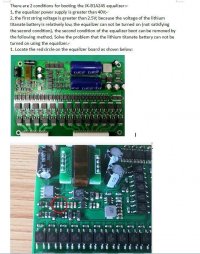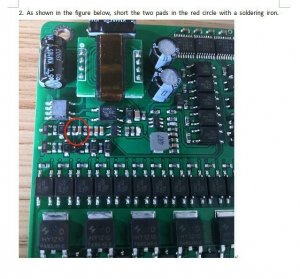daromer
Moderator
- Joined
- Oct 8, 2016
- Messages
- 5,665
Jim you waste more energy transfering energy back and forth all Day Long than burning off some energy ever other week. Active balancing is not for saving energy its for having a longer dod available but only att lower currents. Since if you charge or discharge faster than it can balance it cant Keep Up.
The most economic is actually to monitor and swap cells between packs when needed....
And One more things... You save more energy getting a proper inverter or thicker Wire. Balance is One of the places where it is very easy and cheap to so it cheap in terms of just building it well balanced from start and maintain
The most economic is actually to monitor and swap cells between packs when needed....
And One more things... You save more energy getting a proper inverter or thicker Wire. Balance is One of the places where it is very easy and cheap to so it cheap in terms of just building it well balanced from start and maintain




